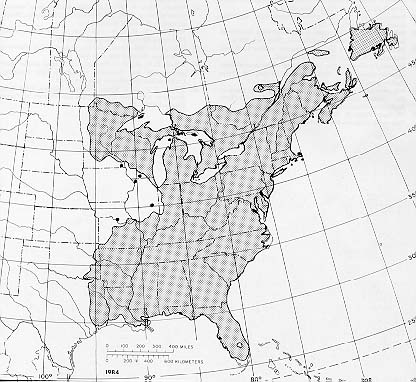As those that have followed the blog for awhile are aware, among my pet peeves are some of the naïve statements that are repeated ad nauseam by proponents of native plants for landscaping. You know the usual litany: natives don’t need water, don’t need fertilizer, resistant to insects, resistant to diseases, yada, yada… According to the dogma, native plants possess these traits because they’ve evolved here and they belong here. I hasten to point out; I have nothing against natives and think we ought to plant more of them whenever they are an appropriate choice. The problem, of course, with the typical native company line is that these statements are so obviously nonsensical they undermine the credibility of native plant advocates. Adaptations to resist environmental stress, for example, are a function natural selection and evolution. There are lots of droughty environments in the world; why should we assume that only local plants will be adapted to drought? Then there is the obvious problem of disturbed environments. Why should we assume that trees that have evolved in native woodlands will be good street trees? In fact, often they’re not.

Torryea taxifolia
But a new and potentially contentious argument is emerging in the ‘Is native better?’ discussion: Assisted migration. The basic premise of assisted migration (also referred to as assisted colonization) is that climate is changing faster than many organisms, especially long-lived organisms like trees, can evolve. Therefore to prevent species extinctions we should pro-actively move species (typically northward in the Northern hemisphere) so they will be in a better place as the world gets warmer. Sound far-fetched? Some of this is already occurring. In Florida a group called the Torreya Guardians has already taken it upon themselves to establish populations of a threatened conifer, Torreya taxifolia, in the southern Appalachians, outside of its native range in the panhandle of Florida. http://www.torreyaguardians.org/ In British Columbia, the provincial forest service is beginning to incorporate climate change scenarios into its tree improvement and development plans; trying to identify seed sources and species adapted to climates predicted throughout the 21st century.http://www.msnbc.msn.com/id/32012170/ns/us_news-environment/

Is local better? Foresters often see significant growth gains by moving seed sources northward. Will climate change increase this effect?
Clearly assisted migration is a controversial topic fraught with all kinds of uncertainties. Is climate really changing? How fast will it change? What about unintended consequences? Could the assisted species out-compete a local species that would’ve been OK otherwise? And then there are those who might wonder aloud about the hypocrisy of embracing species movements when they’re done by conservation biologists but not by horticulturists.

















